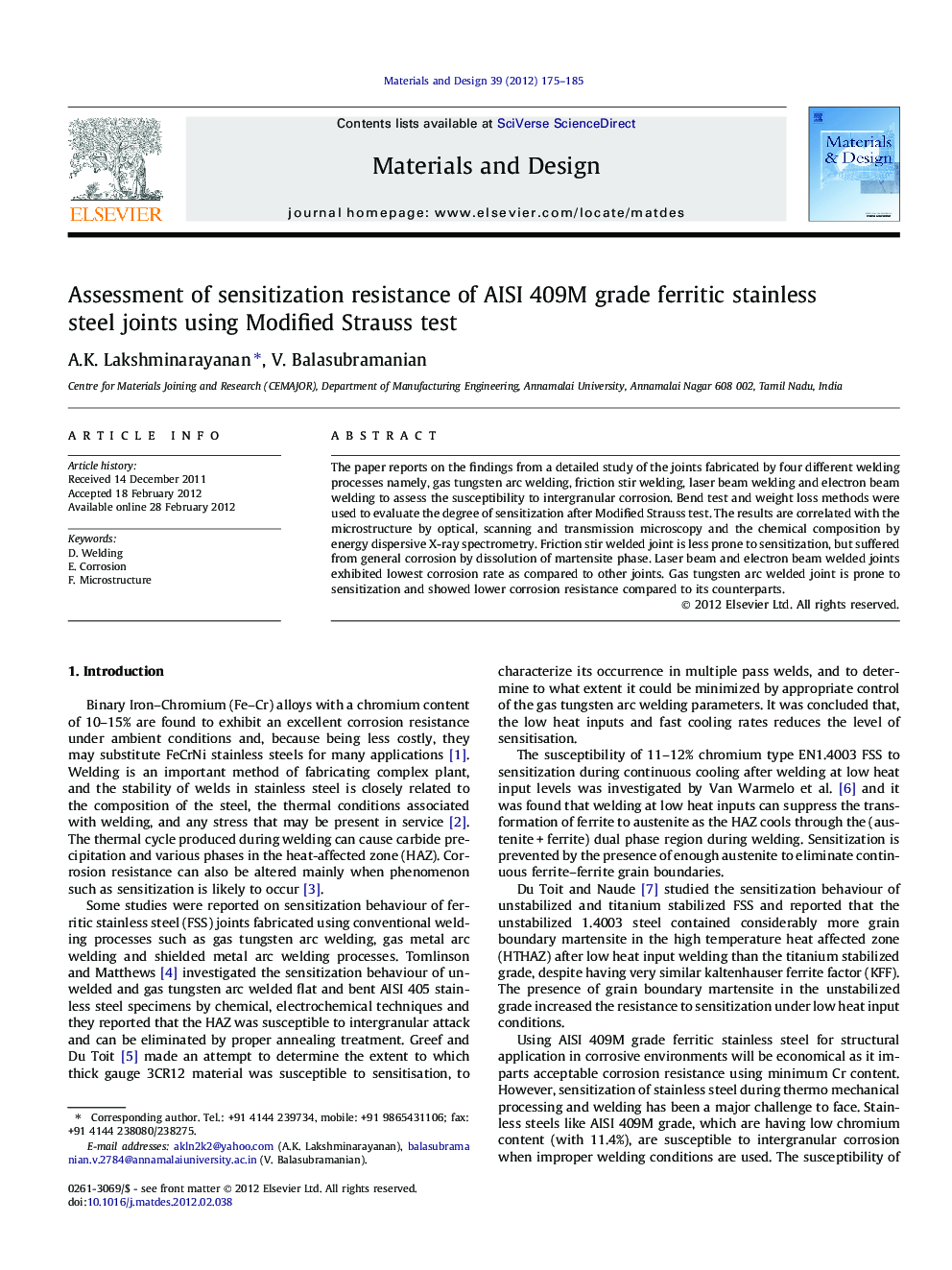| Article ID | Journal | Published Year | Pages | File Type |
|---|---|---|---|---|
| 830662 | Materials & Design (1980-2015) | 2012 | 11 Pages |
The paper reports on the findings from a detailed study of the joints fabricated by four different welding processes namely, gas tungsten arc welding, friction stir welding, laser beam welding and electron beam welding to assess the susceptibility to intergranular corrosion. Bend test and weight loss methods were used to evaluate the degree of sensitization after Modified Strauss test. The results are correlated with the microstructure by optical, scanning and transmission microscopy and the chemical composition by energy dispersive X-ray spectrometry. Friction stir welded joint is less prone to sensitization, but suffered from general corrosion by dissolution of martensite phase. Laser beam and electron beam welded joints exhibited lowest corrosion rate as compared to other joints. Gas tungsten arc welded joint is prone to sensitization and showed lower corrosion resistance compared to its counterparts.
► Sensitization resistance of ferritic stainless steel joints was evaluated. ► Joints were fabricated using GTAW, EBW, LBW and FSW processes. ► The results are correlated with the metallurgical phases and its chemistry. ► FSW joint is less prone to sensitization and GTAW joint showed poorer corrosion resistance. ► LBW joint offered better overall corrosion resistance due to the reduced HAZ size.
